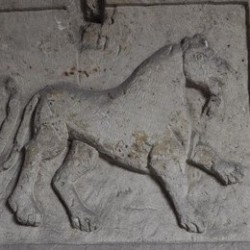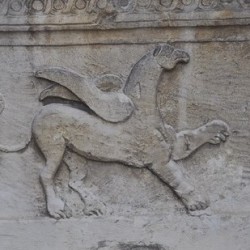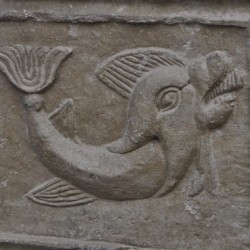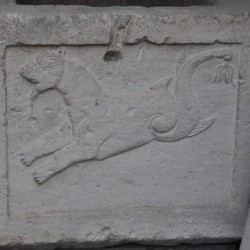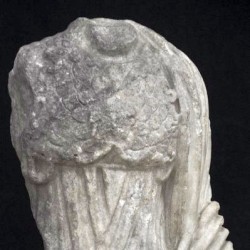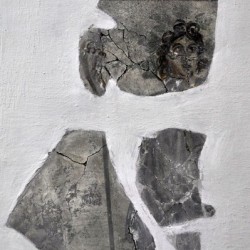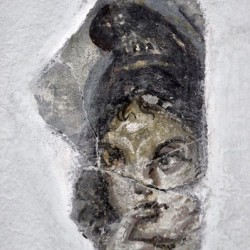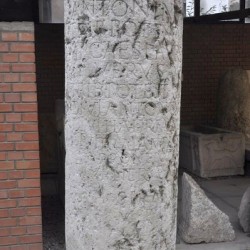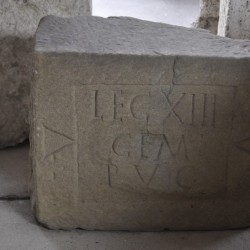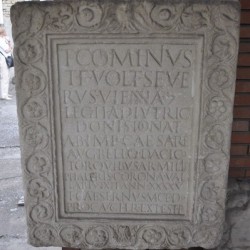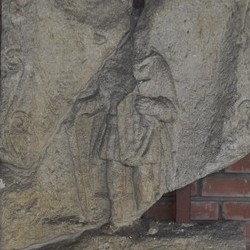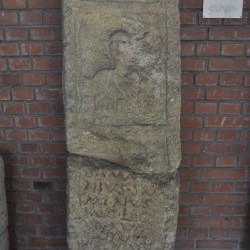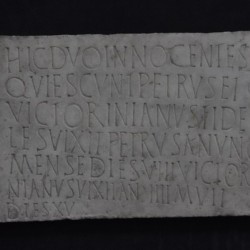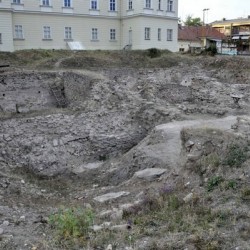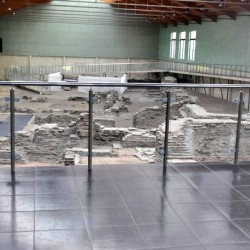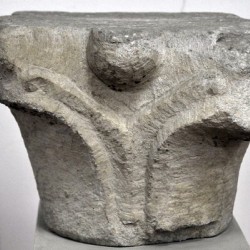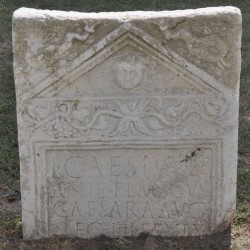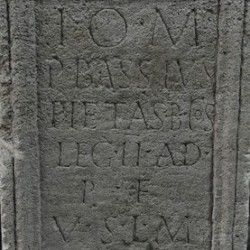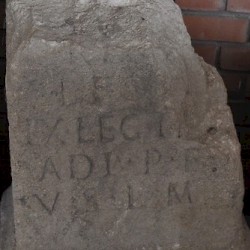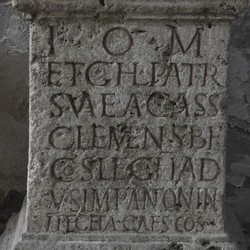Sirmium (Sremska Mitrovica)
Q242733Sirmium: Roman city and river port in Pannonia. The city became an imperial residence and is identical to modern Sremska Mitrovica.
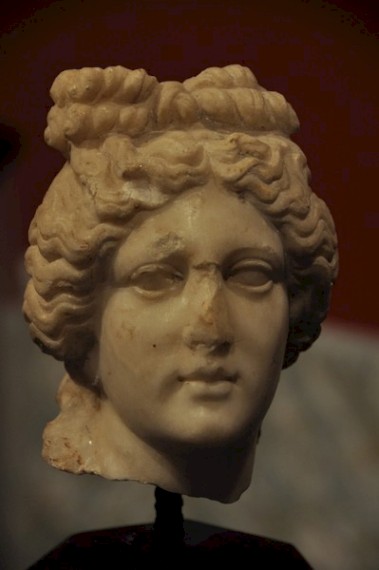
Sirmium is situated on the northern bank of the Savus (modern Sava), about seventy kilometers west of the place where this river empties itself into the Danube, at Singidunum (modern Belgrade).note The area had been occupied for a very long time already when it was, in 35 BCE, conquered by the Roman general Octavian, who was to become famous as the emperor Augustus.
The early history of Roman Sirmium is poorly documented, but it is certain that by the age of the emperor Vespasian (r.69-79), the city had received the rank of colonia.note Inscriptions refer to the normal civil officials, like duumviri and quaestores. It has been assumed that the Ninth Legion Hispana was at Sirmium at the beginning of our era, while an inscription (shown below) appears to document the stay of the Second Legion Adiutrix at Sirmium during the reign of Domitian.
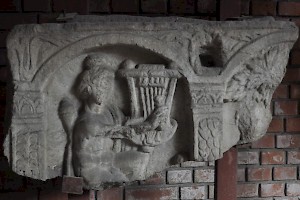
Most archaeological monuments belong to the second century and later. The emperors Trajan (who in 103 made Sirmium the capital of the province of Lower Pannonia) used the city as base for his first Dacian War. Later, Marcus Aurelius resided in Sirmium when he waged war against the northern tribes. It was also the scene of the trial of Herod Atticus.note]
Maximinus Thrax was in the city, preparing for an attack on the Germanic tribes, when in 238 civil war broke out.note Tombstones of legionaries prove how important the city was as base for the Roman army. There is evidence for the presence of soldiers from II Adiutrix, XIII Gemina, I Minervia, and VIII Augusta. Subunits of the two last-mentioned units, both from the Rhine army, were probably in Sirmium until c.260.
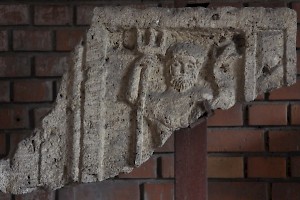
The city certainly flourished in the third and fourth century, when no less than ten Sirmians rose to the imperial power. The first of these was Decius (r.249-251), whose sons Herennius Decius and Hostilian briefly reigned in 251. Claudius II (r.268-270) was not only born in this city, but died there too. His brother Quintillus reigned in 270, but was almost immediately replaced by his fellow-Sirmian Aurelian (r. 270-275). Probus (r.276-282) was born and murdered in Sirmium, while Maximian (r. 285-310), Constantius II (r.337-361), and Gratian (r.367-383) were from the city as well.
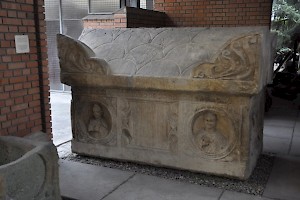
The city, the capital of what was now known as Pannonia Secunda, became an imperial residence during the reign of Licinius. Remains of the palace have been identified in the southeast of Sremska Mitrovica: a basilica and a hippodrome. On other places, two cemeteries, a grain silo, and baths have been identified, while the course of the city wall can be followed for quite some distance. Sirmium was the site of one of Licinius' defeats against Constantine the Great.note
When in c.318 the Roman Empire was divided into four regions, Sirmium became the capital of the Prefecture of Illyricum. Three legions, IIII Flavia, V Iovia and VI Herculia, protected the city against Germanic tribes in the north. Their bases were at Singidunum, Castellum Onagrinum, and Teutoburgium.
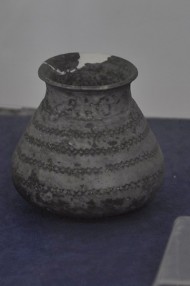
The city was an important center of Christianity. Evidence for the third century is inconclusive, although the sarcophagus of a wealthy couple, shown with a dove, offers a tantalizing indication that at least the woman belonged to the new faith. Several Christian inscriptions prove that the city certainly had a Christian minority in the fourth century. The bishop of Sirmium is mentioned in several texts, while there were no less than four synods in the city.
In Late Antiquity, the Pannonian provinces were first conquered by the Huns, who took Sirmium in 441. When this tribal federation fell apart after the death of king Atilla, the Ostrogoths remained in control of Pannonia, but when the Byzantine emperor Justinian suggested them to go to Italy, they left the region. For a while, the Gepids were the city's masters, but after 567, the city returned to the Empire again, only to be besieged by the Avars.
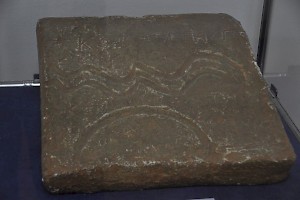
A silent witness of this war is a rooftile, dated to 582, with a prayer inscribed on it.
Christ, our Lord,
help our city halt the Avars.
Protect the Roman Empire,
and he who was written this.
Amen.
It did not help: after a siege of three years, the city was captured. Many inhabitants left for Salona. Soon after, the city burned down. Yet, it survived, and there was still a military district called "Sirmion" in the tenth-century Byzantine Empire.
